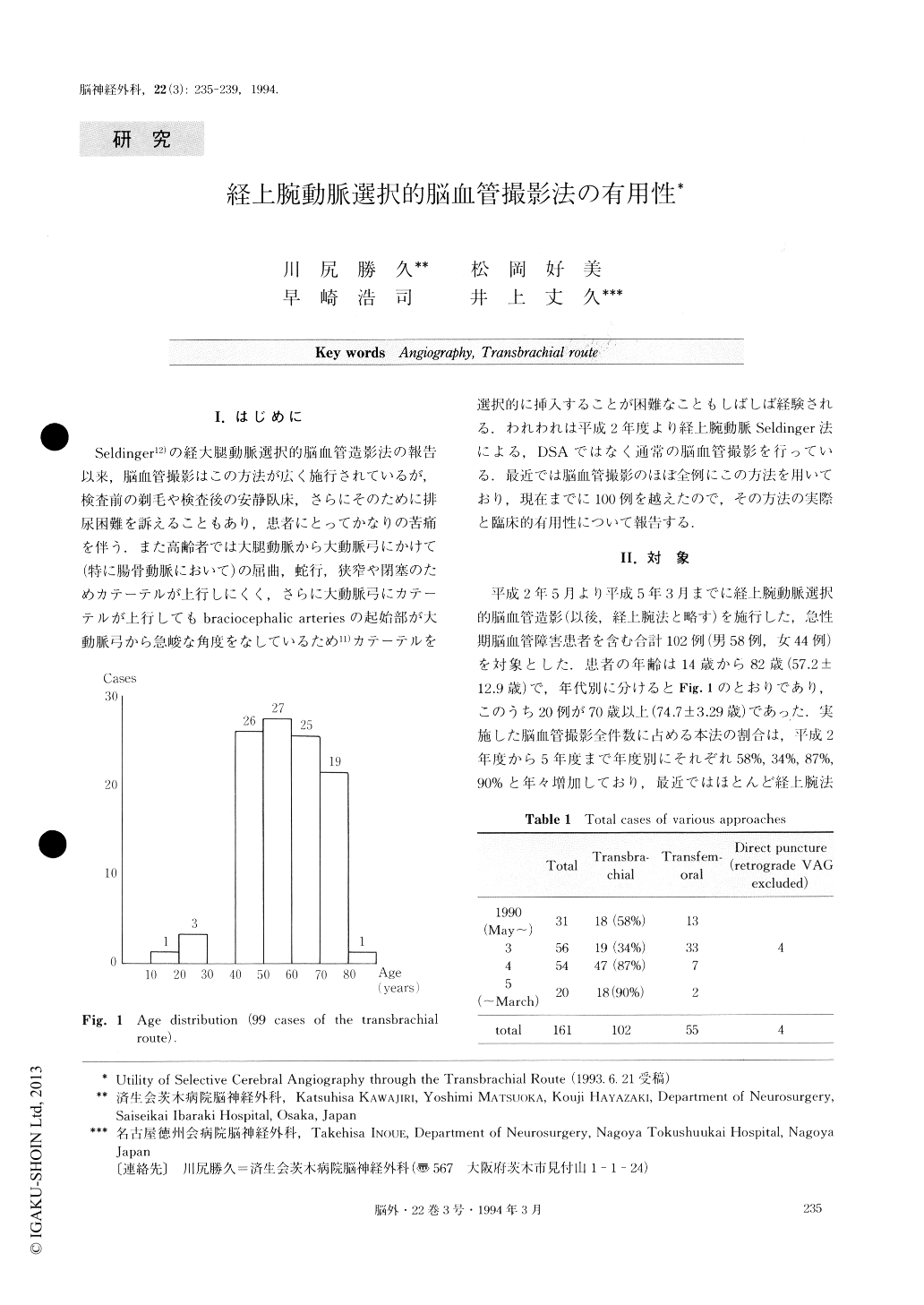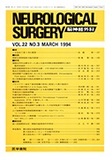Japanese
English
- 有料閲覧
- Abstract 文献概要
- 1ページ目 Look Inside
I.はじめに
Seldinger12)の経大腿動脈選択的脳血管造影法の報告以来,脳血管撮影はこの方法が広く施行されているが,検査前の剃毛や検査後の安静臥床,さらにそのために排尿困難を訴えることもあり,患者にとってかなりの苦痛を伴う.また高齢者では大腿動脈から大動脈弓にかけて(特に腸骨動脈において)の屈曲,蛇行,狭窄や閉塞のためカテーテルが上行しにくく,さらに大動脈弓にカテーテルが上行してもbraciocephalic arteriesの起始部が大動脈弓から急峻な角度をなしているため11)カテーテルを選択的に挿入することが困難なこともしばしば経験される.われわれは平成2年度より経上腕動脈Seldinger法による,DSAではなく通常の脳血管撮影を行っている.最近では脳血管撮影のほぼ全例にこの方法を用いており,現在までに100例を越えたので,その方法の実際と臨床的有用性について報告する.
Selective cerebral angiography through the trans-brachial route was performed in a total of 102 patients including those at the acute phase (24 with subarach-noid hemorrhage, 10 with malformation of cerebral ves-sels, 7 with brain tumor, 49 with ischemic cerebro-vascular disease, and 12 with other cerebrovascular abnormalities) from May, 1990 to March 1993. The pa-tients were from 14 to 82 years of age, and 20% of them were 70 years or older (74.7±3.29 years). A 5 Fr. introducer catheter (Radifocus Introducer Kit A, Teru-mo Corp., Tokyo) was placed in the brachial artery at the bend in the right arm. A Judkins type-4cm right coronary catheter (C. R. Bard, Inc., Massachusetts) was selectively inserted into the common carotid artery and vertebral artery through this 5 Fr. introducer catheter, and angiography was performed.
Three cases of unsuccessful puncture of the brachial artery were excluded, and the remaining 99 cases were included in the analysis. Transbrachial selective cere-bral angiography was performed in 58, 34, 88, and 90% of the total number of cases, subjected to cerebral angiography in 1990, 1991, 1992, and 1993 respectively. Thus, this approach to the cerebral vessels has been used in the majority of the recent cases. The rate of success in terms of angiography (no. of occasions/no. of attempts * 100) was 99% (73/74) for r-CAG, 94% (52/55) for 1-CAG, 100% (41/41) for r-VAG, and 82% (9/11) for 1-VAG. When only the 20 cases of the 70-year-old or older patients were considered, the rate was 100% (17/17) for r-CAG, 100% (14/14) for 1-CAG, 100% (8/8) for r-VAG, and 100% (2/2) for 1-VAG. This complete success among older patients is worthy of note. In 2 cases, the catheter was about to coil upon itself near the tip and form a knot. Such accidents should be avoided by careful manipulation. Thus, selec-tive cerebral angiography through the transbrachial route using a 5 Fr. introducer catheter and a Judkins type-4cm right coronary catheter was safely performed upon older patients on whom transfemoral approaches could not be made, and succeeded in 100% of the pa-tients. This approach to the cerebral vessels seemed to be useful in performing selective cerebral angiography.

Copyright © 1994, Igaku-Shoin Ltd. All rights reserved.


